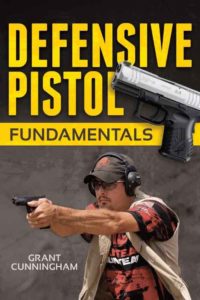At GunDigest, we independently review products. However, we may earn a commission when you purchase through links on our site. Learn More
Concealed Carry: The Secret to Effective Reload Practice
Practice makes perfect, unless it's the wrong kind of practice. And from the standpoint of prepping for defensive handgun use, dry reload practice might be more of a hindrance than help.

It’s tempting to practice your reloads to make them faster. Many in the business will prescribe such things as weighted dummy practice magazines, or real magazines loaded with Snap-Caps or weighted dummy rounds, to practice with.
My experience doing this in a competition environment was not altogether successful: While I got really fast at the manipulation part, that didn’t help everything else that went along with the need to reload my gun.
What I see with most students is that the recognition of slide lock – the indication to perform the learned skill of reloading the gun – is usually (and usually by far) the most inefficient part of the process.
That brief period of time while they stop to analyze what happened and then decide to initiate that reload almost always exceeds the time they shaved on the manipulation portion by doing endless dry repetitions of the reload. It was certainly the case with me.
Dry practice omits that stimulus of achieving slide lock in a string of fire. In dry practice, the slide is pre-locked to the rear; there is no stimulus of the slide dynamically locking itself to the rear, no change in recoil pattern because of the difference in weight distribution and no sensation of the slide failing to return to battery.
All of those things, taken together, are what tell you that your gun is out of ammunition and needs to be recharged. Without that, you have to spend time analyzing why the gun isn’t running and then decide to initiate the reload. With that stimulus, you can use the brain’s ability for recognition and recall to make that decision (and execute that decision) far more efficiently.
I’ll recommend some dry practice simply to get used to the mechanics of the reload, particularly if the student is having trouble in that area, but beyond that I believe it’s far more important to practice that skill in context, in the manner that you’ll actually need to use it.
That means shooting to experience slide lock and developing the ability to perform the reload in direct response to that stimulus, without cognitive thought. The only way to do that is to use live ammunition on a real range.
Editor's Note: This article is an excerpt from Defensive Pistol Fundamentals available at GunDigestStore.com.
Mastering the Semi-Auto Pistol
In Defensive Pistol Fundamentals, Grant Cunningham discusses the concepts, skills, and equipment you’ll need to overcome this worst-case scenario. While the concepts and skills discussed can certainly be utilized while using a variety of different firearms, this guide specifically covers the use of a semiautomatic pistol. Get Your Copy Now